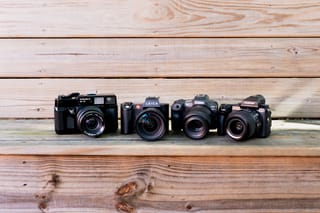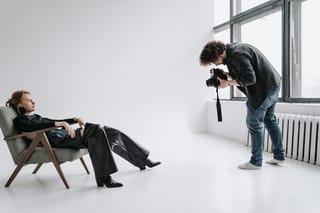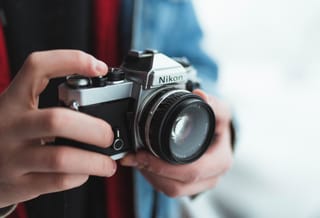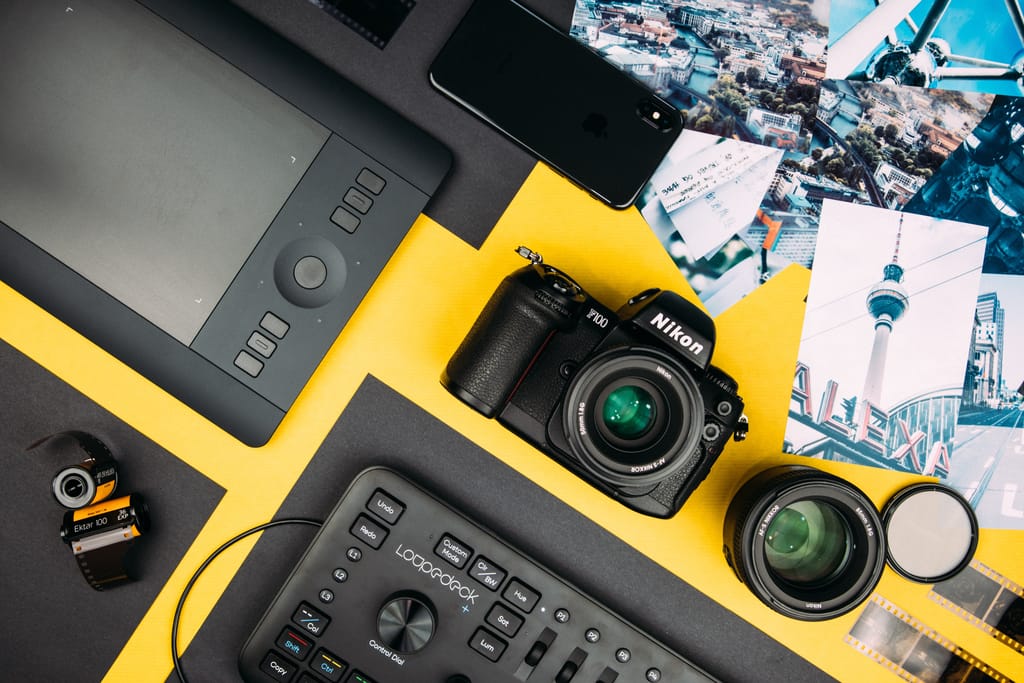
I’ve said it before, every photographer should shoot film—but for those who’ve only ever shot a digital camera, adapting to an older film body may seem like a tall task.
Well, it doesn’t have to be that way. In fact, there are some film cameras that basically operate and handle just like your current digital camera. The only difference is that there’s no rear LCD screen and the battery life is much better for the film camera. The fact that they’re so similar shouldn’t be too surprising, after all, digital cameras were built upon the foundation of the film cameras that came before them.
I’m sure that no matter what you’re shooting today, there’s a film camera from yesterday that will feel familiar as soon as you pick it up. Here are some of my favorites film bodies for digital photographers.
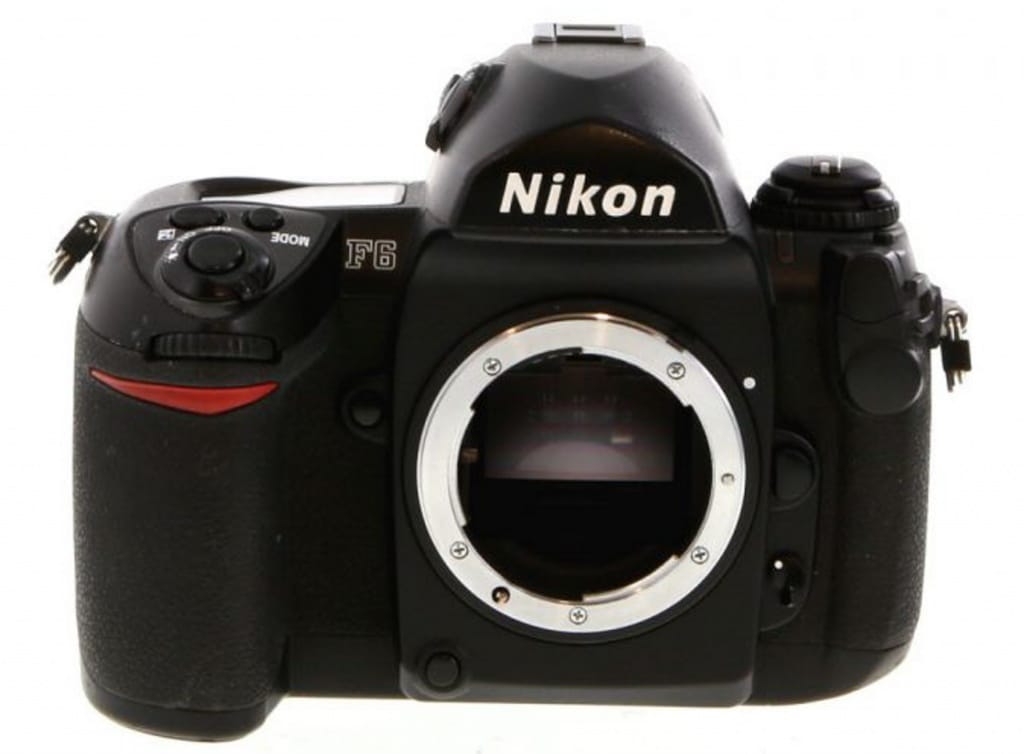
Nikon F6
If you’re coming from a Nikon DSLR, you’ll feel right at home handling the F6. As a nice bonus, you can use the same F-mount lenses you already own. There’s even features on the F6 that outgun some Nikon DSLRs. Most notably, frames per second—the F6 can do 8 when paired with the optional MB-40 battery grip, or 5.5 on its own. Have you ever burned through an entire roll of 24 exposures in 3 seconds? It’s exhilarating.
Released in 2004, the F6 is arguably the most technologically advanced SLR ever made. The color matrix meter alone is stuff of legends. The autofocus is fast enough to keep up with demanding sports photogs and locks on confidently. On top of it all, the construction and design is top-notch—everything just glides, locks and spins to perfection. It’s such a precise tool.
It’s unclear whether Nikon still manufacturers the F6, but you can buy a new one directly from them to this day, so they definitely have a backstock of bodies available. Of course, buying a used one will save you quite a bit of money, and since the camera is practically indestructible, a used F6 is sure to keep firing without missing a beat for a long time.
If the pricey-but-worth-every-penny F6 is too rich for your taste, have a look at the Nikon F5, or the Nikon F4, Nikon F4E and Nikon F4S—they’re all dependable, pro-level film cameras with awesome features. The best-kept secret might be the Nikon F100, which is a scaled-down version of the F5, but more portable and affordable.
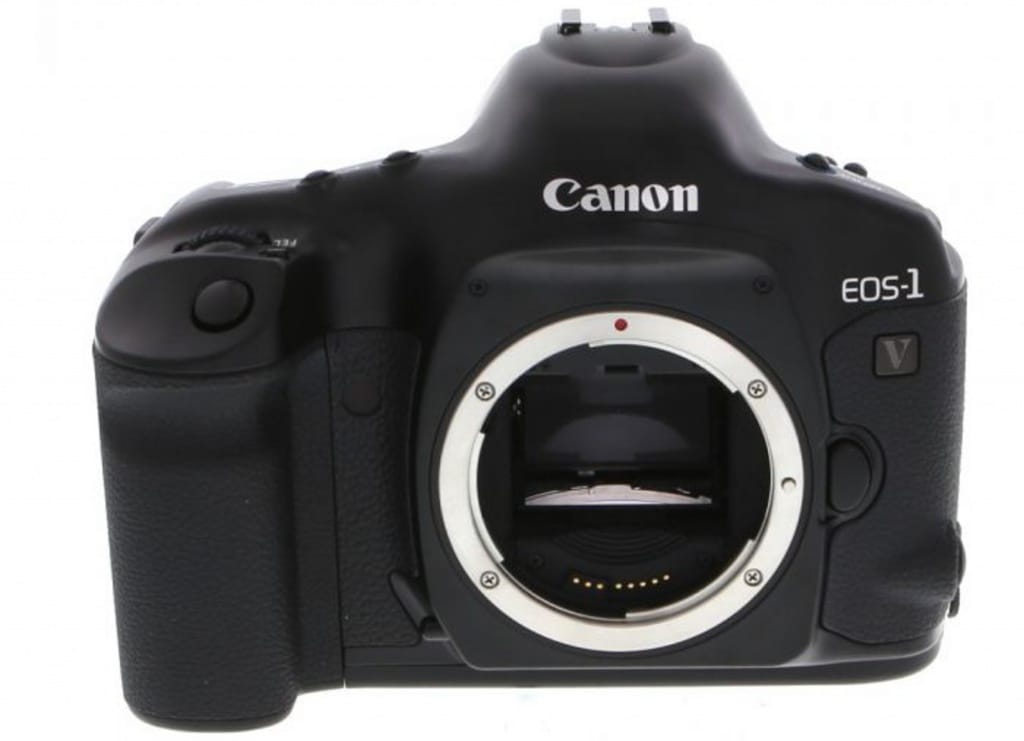
Canon EOS 1V
Similarly, if you’re coming from a Canon DSLR and already have some EF-mount lenses, the EOS 1V is an easy transition to make. This fifth-generation (hence the roman numeral “V” in its name) professional-grade body is the culmination of decades of Canon excellence and innovation, and is a worthy addition to a lineage that includes the mighty Canon F-1N and the tank-like T90.
Released in the year 2000, just five years before the 5D (a first-generation full-frame digital camera), the EOS 1V was only discontinued recently, in 2018. When a camera is in production for nearly two decades, that should tell you a lot about its relevance and popularity. And the EOS 1V is in fact still a great camera in 2020, and will be for decades to come. In 2000, it boasted the fastest moving mirror ever produced. It can shoot an incredible 10 fps with the PB-E2 Power Drive Booster. The autofocus is especially good for a 20-year-old camera, as it can basically nail focus in the dark.
The EOS 1V is a great value today, but if you want a cheaper option, the Canon EOS 3 is very similar, although it’s constructed with high-grade plastic rather than a magnesium alloy, and the film advance/rewind is a little noisier. The Canon EOS Elan7 or the Canon EOS Elan7E are also good budget alternatives, as they were contemporaries of the EOS 1V.
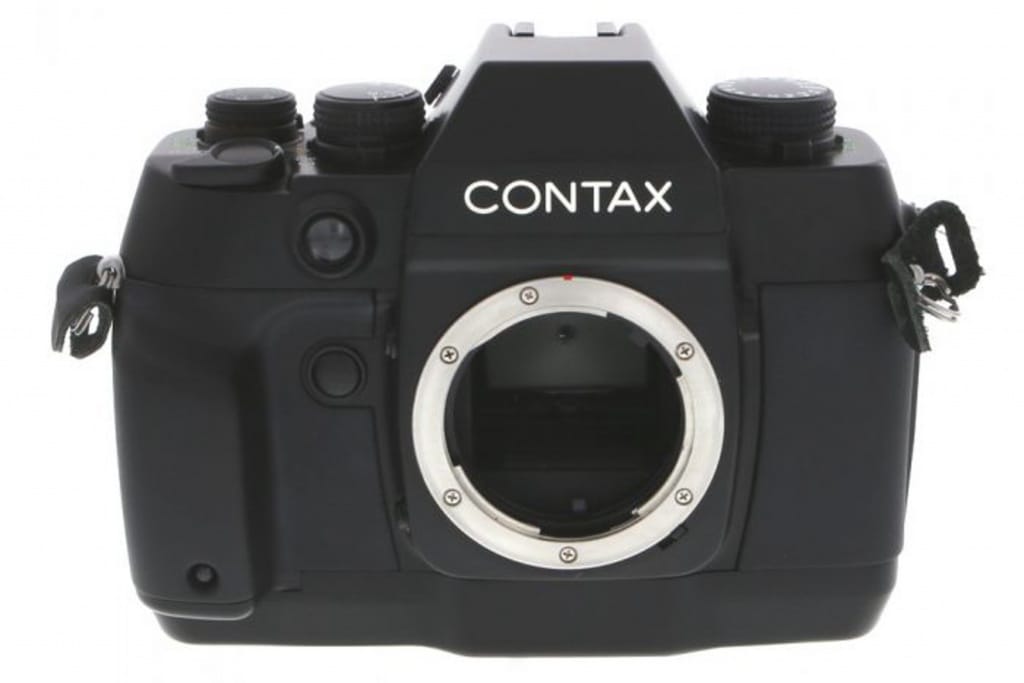
Contax AX
This camera might be not as popular as the Canons or Nikons, but the outline should ring a bell to Fujifilm digital shooters. That’s right, the X-T series took more than a few design cues from Contax, and for good reason—the lines on this body are gorgeous, and functional to boot. The AX wasn’t the first Contax SLR to use this body shape, the RTS series perfected it through three iterations, and it’s still a looker to this day.
What makes the AX special is that it was the first Contax SLR to offer autofocus capabilities, opening up a whole new world for the legendary line of sharp Contax Carl Zeiss lenses. How did they pull this off? Well, the AX uses an ingenious automatic back focusing system which moves the entire mirror and film plane back and forth to achieve focus on the otherwise manual focus lenses. This may seem like a complicated workaround, and it is. Over 100 patents were filed in the creation of the system—all because Zeiss couldn’t be convinced to manufacture autofocus lenses just yet.
Regardless, the Contax AX just works. And if you’re more into the tactile feel of Fujfilm’s current X-series lineup, you’ll love using this body. The dials and switches are satisfying to use and offer just the right amount of resistance, so you won’t accidentally knock them off your settings. Don’t feel like manually setting your exposure? No problem. There are automatic exposure settings like any modern digital camera.
Fujifilm didn’t just take a cue from the AX to design the X-T1, they also borrowed heavily from the Contax G2 when creating the rangefinder-style X-Pro1. Again, can’t blame them—it’s a stunning and functional design. Don’t know if Fujifilm also looked at the medium format classic Contax 645 when coming up with their GFX 50S, but it wouldn’t surprise me. That camera system is extremely practical and intuitive.
Want to explore more options? Why not give our gear experts a call at 1-800-DIAL-KEH—we’ll hook you up with something that’s just right for you.

